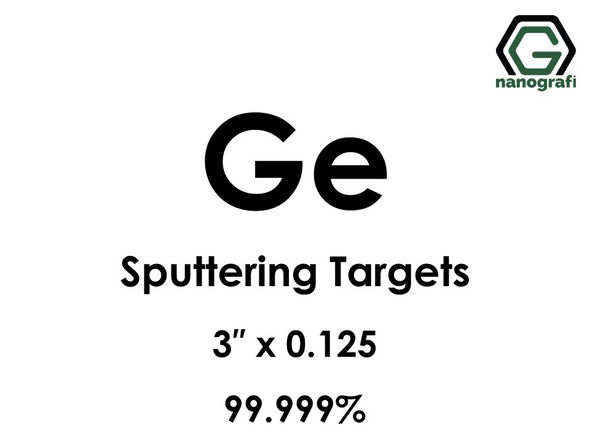Description
1 piece/275 €
Please contact us for quotes on larger quantities !!!
Bismuth (Bi) Sputtering Targets
Purity: 99.999%, Size: 3'', Thickness: 0.125''
Sputtering is a proven technology capable of depositing thin films from a wide variety of materials on to diverse substrate shapes and sizes.
The process with sputter targets is repeatable and can be scaled up from small research and development projects. The proses with sputter
targets can be adapted to the production batches involving medium to large substrate areas. The chemical reaction can occur on the target
surface, in-flight or on the substrate depending on the process parameters. The many parameters make sputter deposition a complex process
but allow experts a large degree of control over the growth and microstructure of the area.
Applications of Sputtering Targets;
- Sputtering targets is used for film deposition. The deposition made by sputter targets is a method of depositing thin films by sputtering
that involves eroding material from a "target" source onto a "substrate" such as a silicon wafer. - Semiconductor sputtering targets is used to etch the target. Sputter etching is chosen in cases where a high degree of etching anisotropy
is needed and selectivity is not a concern. - Sputter targets is also used for analysis by etching away the target material.
One of the example occurs in secondary ion spectroscopy (SIMS), where the target sample is sputtered at a constant rate. As the target is sputtered,
the concentration and identity of sputtered atoms are measured using mass spectrometry. By helping of the sputtering target, the composition of the
target material can be determined and even extremely low concentrations of impurities are detected.
Sputtering target has also application area in space. Sputtering is one of the forms of space weathering, a process that changes the physical and
chemical properties of airless bodies, such as asteroids and the Moon.
Bismuth is a brittle metal which is silvery in color with a pink tinge. It is stable in air and water. Bismuth has poor thermal and electrical properties but
finds applications in the manufacture of fusible alloys, a range of materials with low melting points which are suitable for various applications including
solders and thermal fuses. Pure bismuth shows a high absorbtion of gamma rays which makes it useful as a filter or window for these particles, whilst
at the same time permitting the passage of neutrons.
Bi exhibits thermal conductivity and this property allows it be used in various applications, such as thermoelectric conversion, devices exploiting large
magneto-resistance and reference electrodes used to detect heavy metals. Another interesting property exhibited by Bi is the transformation of films of
this semi-metal in to semiconductors at a critical thickness of approximately 30 nm. These films can be deposited by different techniques such as laser
pulsed deposition, RF and DC sputtering and thermal evaporation. Moreover, it is important to note that different authors have reported that when
coatings are deposited through physical vapor deposition (PVD) techniques the crystalline structure and morphology of the Bi coatings depend on the
deposition parameters such as: the temperature of the substrate, the potential applied to the target, the ion beam energy and the rate at which energy
is released when the films are deposited by ion beam bombardment. In DC sputtering, these parameters can be affected by applying positive pulses
between the substrate and the target; this improves the film’s density and mechanical properties.







